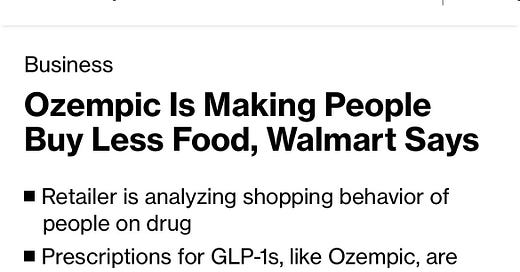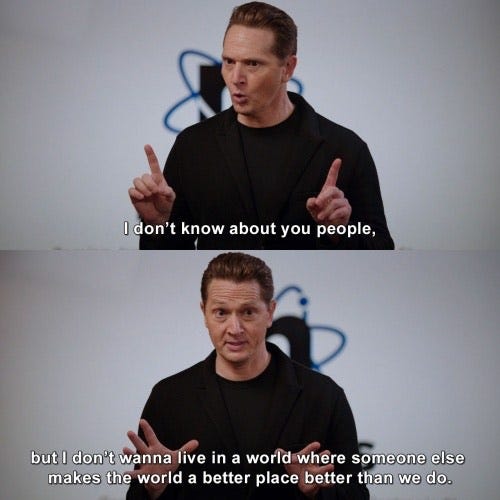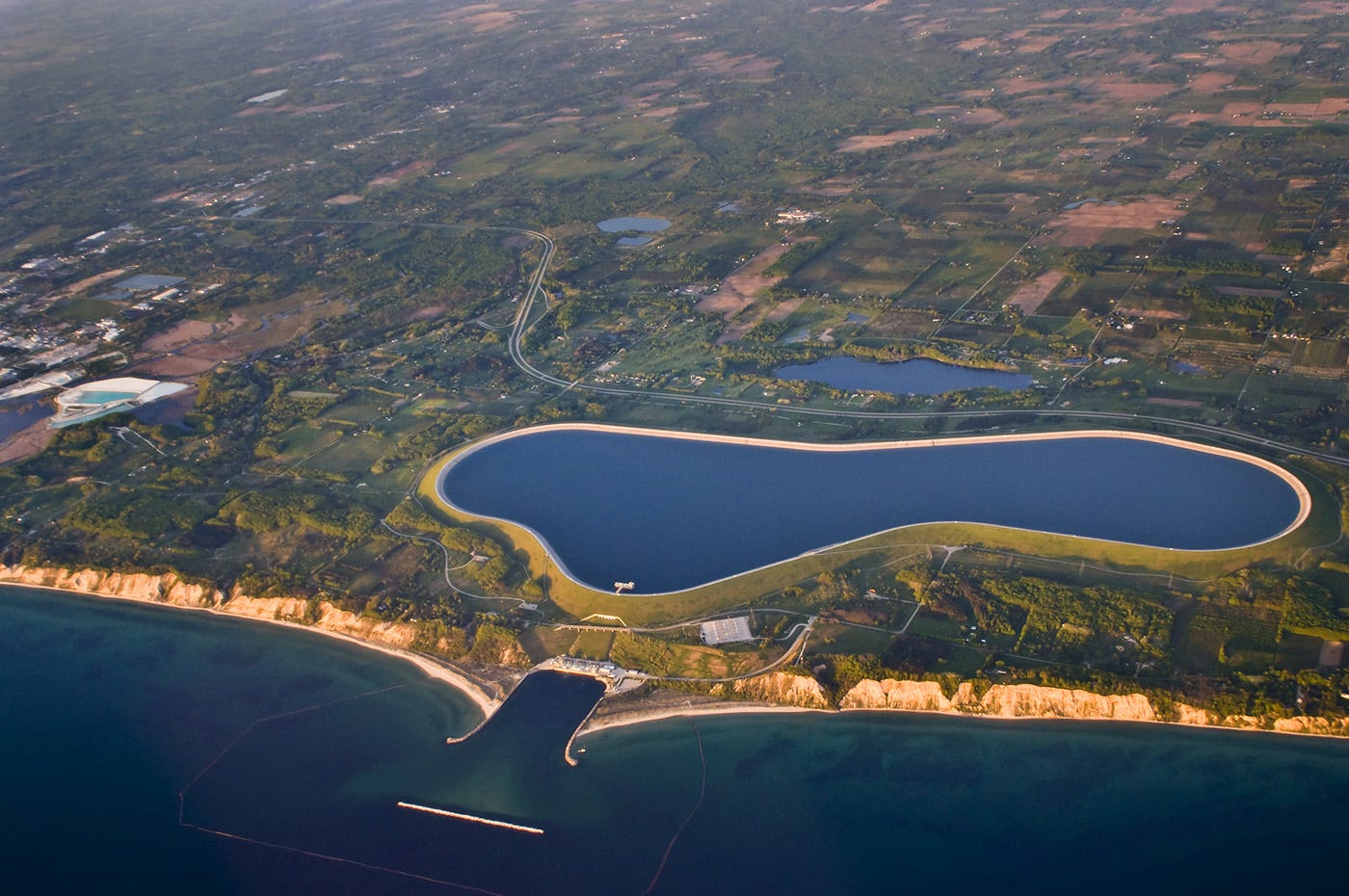Governments are suddenly stalling EV adoption amidst competing priorities
Canada looks to be joining the US in enacting EV tariffs. Is Ozempic environmental? And why cleantech entrepreneurs need to look for boring inefficiencies.
Emissions Decisions is a weekly newsletter investigating our thesis on environmental trends/solutions. Our long-term goal is to provide tools that power optimal environmental decisions. We appreciate the support in achieving this!
Existing subscriber? You don’t need to do anything, but please share.
Was this forwarded to you? Become one of our subscribers by clicking below.
Governments still can’t decide whether to be good or look good
We’ve written about this dynamic before, but it seems to become more critical daily and needs emphasizing. This week, the Canadian government said it was considering imposing tariffs on Chinese EVs. Additional tariffs would make EVs more expensive in Canada, hurting both EV adoption and household cost of living. Environmental groups are flagging this disconnect: governments have said that they want to solve emissions, but their emphasis is more on “them” doing it and less on the actual “solving.”
People have asked if we have a yearly quota for using the above image when discussing current themes, and we are sorry to say that the answer is yes and that we haven’t hit it.
Governments continue to struggle to balance actual environmental progress with optics. Three expanded examples are listed below, and we provided more details on two of these in previous newsletters.
1. Governments and activists are blocking mines that the energy transition requires
Electric vehicles and renewable energy infrastructure all rely on copper. For instance, an EV requires more than three times the amount of copper used in an internal combustion engine, while buses require at least ten times as much. That’s a lot of mining. People will want those things to be electric and cheap to drive adoption and then protest the mines that make them possible. We detailed the resulting delay in mining timelines here. If we want a low-cost energy transition, we need to make an active choice about how environmental advocates view mining and how governments balance mine impacts against the more significant benefits of the energy transition.
2. Governments aren’t allowing consumers to access cheap environmental solutions
Governments continue to place tariffs on Chinese EVs and solar cells, and we now see Canada heading down the same path.
Similar to most tariffs, the aim is to protect domestic manufacturing jobs. These merits become more complicated when the inexpensive imports are EVs. Specifically, some Chinese EV models come in below $10,000, competing with all cars in North America. A price advantage like this allows for more rapid EV adoption to reduce emissions.
Governments have repeatedly said that the environment is the most important thing and that industries must adapt to meet environmental targets. This seems at odds with protectionist policies on low-cost environmental products. On the other hand, you never want the auto industry to be hollowed out simply because foreign actors subsidize competing products. There are fair points on both sides, and we are interested in what readers think. The tougher dynamic that is becoming increasingly clear is that this trend likely continues for most if not all, cleantech products.
3. Cheap environmental products will only increase globally, but tariffs prevent households from getting those benefits.
Environmental goods from other countries are getting cheaper. This point is underappreciated and will only increase the natural conflicts that governments face in setting policies. The bottom line is that governments are incentivized to reduce emissions, so they are willing to subsidize the products that help them.
As countries enact barriers against cheaper goods, it also hurts cost-of-living metrics, and cost of living and inequality are significant barriers to environmental adoption. If you provide people with a certain quality of life, they are much more willing to invest personally in lower emissions solutions, and cost is typically the main counter to any environmental policy. This will make the decision even more difficult for governments.
Is Ozempic cleantech?
Emissions associated with our food supply chain are shocking; solving food waste would be more helpful than taking half the cars off the road, as we’ve written before . That’s why the Ozempic numbers are wild. If people are eating fewer calories, and 20% fewer calories is an estimate, then that’s definitively less emissions. Kudos to the Ozempic team?
Pumped storage still represents over 50% of energy storage, which should show us that we already have a lot of viable storage solutions
Power demand is accelerating between AI, reshoring, and electrification. Within this broader theme of accelerating demand, the volatility within a 24-hour cycle will increase with higher demand spikes during the day (you won’t see businesses telling people that their AI tool is only available at night when people aren’t working…). This means more storage is required to reduce grid emissions and absorb excess power. We recently shared articles on new battery designs to meet these needs, but it’s important to remember that simple works, too; over 50% of the utility-scale energy storage in the US remains pumped storage. Look at this article if you are ever discouraged about the battery solutions required. We can get there.
Look for inefficiencies if you want to build a business that helps the environment
Inefficiencies/waste means that 1) there are significant emissions to reduce and 2) it is typically economical to do so, as waste costs money. An easy example is cleantech companies focusing on building/home efficiency, even something as specific as air duct cleaning. Cleaned air ducts can reduce energy use in a building by 20 - 30% (the low end of that estimate is from the EPA, and the high end is from the air duct cleaning association, as expected). Keep an eye out for everything that seems wasteful.
Impact Logic, a technical recruitment leader for impact-driven founders, sponsors our jobs section below. Reach out to them here as you look to fill critical roles.
Jobs that we’ve historically thought are interesting include
Legal, Ops, BD, R&D, Product and Engineering roles at SPAN
Engineering, Marketing, and Supply Chain roles with Crusoe
Corporate Development and Engineering roles with Carbon Clean
Was this forwarded to you? Become one of our subscribers by clicking below.
Thank you for your time and your thoughts!










